The Employer Guide to the PA Role and Scope of Practice
The role of Physician Assistants (PAs) is rapidly growing in Canada, with increasing recognition of their capabilities and the valuable role they play within the healthcare system.
By gaining a better understanding of what PAs can offer, you'll be well-equipped to make informed decisions when it comes to expanding your healthcare team.
Implementing PAs can help extend the services of a physician, in addition to:
Alleviating physician workload and decreasing burnout
Ensuring continuity of care: PAs can establish long-term relationships with patients, ensuring consistent follow-up and management of their healthcare needs.
I. What is a PA?
PAs are highly trained healthcare professionals who work collaboratively with physicians and other members of the healthcare team to provide patient care.
PAs undergo rigorous education and training to obtain the necessary knowledge and skills to practice medicine. Typically, they hold a bachelor's degree in a science-related field, followed by a specialized PA program accredited by the Canadian Medical Association. These programs usually span two to three years and include both classroom instruction and clinical rotations.
Upon completing their education, PAs must pass the national certification examination administered by the Physician Assistant Certification Council of Canada (PACCC). This examination ensures that PAs meet the highest standards of competence and professionalism.
II. PA Scope of Practice
PAs in Canada have a scope of practice that outlines the specific responsibilities and duties they are authorized to perform.
While their scope of practice may vary slightly from province to province, there are general principles that govern their role nationwide.
In summary, PAs are trained to perform a wide range of clinical tasks and procedures, including:
History taking
Physical Examination
Order and Interpret Investigations (Labs, PFTs, imaging including x-ray, MRI, CT scan, biopsies, etc)
Formulate and Communicate Diagnoses to patients
Formulate Treatment and Management Plans
Prescribe medications, therapies or other modalities
Perform procedures (e.g. casting, suture/staple removal, lumbar punctures, injections (joint, soft tissue, pain blocks, local blocks), vaccinations, laceration repair, etc.)
Obtain informed consent for procedures or surgeries
Perform Surgical Assist
Their comprehensive training equips them to provide primary and specialized healthcare services to patients across various medical specialties.
III. Defining the PA role in your practice
Before onboarding a PA, it is important to envision how you see the PA role being integrated into your practice/department.
What do you hope to achieve by hiring a PA? Defining what the goals are for the practice or department will help define what clinical duties you hope the PA will perform. This can include:
Decrease physician workload: By bringing a PA on board, you can effectively distribute the workload, allowing physicians to take on more patients, focus on research/educational endeavours or focus on more complex cases and specialized care. This collaborative approach can improve efficiency, reduce burnout, and enhance patient outcomes.
Improved coverage: PAs work as physician extenders to “fill in the gaps” in coverage and continuity of care. This can include:
Additional Support During Clinics: In busy outpatient clinics, PAs can provide invaluable support to physicians by managing routine visits, follow-up appointments, and minor procedures. For example, in my practice as an Orthopaedic Surgery PA, introducing a PA has allowed the outpatient clinic to reduce the number of hours of the clinic (from 8 to 6 hours per clinic), and doubling the number of patients being seen per clinic without increasing physician workload.
Pager Call and On-Call Availability: PAs can assist with pager call duties, particularly in settings where physicians may have a high patient volume or are managing complex cases. This can be especially helpful in academic settings when residents have dedicated teaching days, tied up in the operating room, or are post-call.
Shift Coverage and Extended Hours: PAs can provide coverage during shifts, including evenings, weekends, and holidays.
Surgical First Assist: PAs can also function as surgical assists, in addition to clinic, inpatient/ward management and on-call responsibilities.
Improved continuity of care, transition of care, and follow-up: PAs excel in ensuring continuity of care during patient transitions, such as from hospital to outpatient settings or from one specialty to another. They help facilitate referrals, or can get involved in patient care navigation (PCN) roles and quality improvement initiatives.
Consider what duties the PA will perform:
The scope of practice of a PA often mirrors the supervising physicians they work with. This includes patient assessment, diagnosis, treatment, and follow-up care.
PAs are trained to provide continuity of care by managing routine and chronic conditions, conducting physical examinations, ordering and interpreting diagnostic tests, and prescribing medications as authorized by their supervising physician.
Consider what clinical areas the PA will practice in: PAs are flexible in terms of where they can practice.
Will the PA work exclusively in an outpatient clinical setting?
Or will the PA work in a style that mirrors that practicing physician? (e.g. a combination of outpatient, inpatient, ambulatory care, call)
Consider Supervision and Delegation: PAs can be autonomous, but are not completely independent. They work collaboratively with the supervising physician, and a clear PA/MD communication pathway is important.
PAs work under the supervision of physicians, who oversee their clinical activities. The supervising physician provides guidance, mentorship, and oversight to ensure that the PA is practicing within their authorized scope, especially when orienting a new PA hire or working with a new PA graduate.
Many supervising MDs describe working with a new PA a lot like working with a resident (a very senior resident), who has the background and clinical knowledge but requires guidance and experience to understand specific treatment preferences of the supervising physicians they work with.
Physicians delegate appropriate tasks and procedures to PAs based on their training and competence, allowing the PA to assume certain responsibilities under their guidance. This delegation of tasks helps streamline patient care and optimizes the workflow within the healthcare team.
IV. For Background Reading: PA Scope of Practice Documents
There are several PA Scope of Practice documents outlining the PA role in full detail:
CAPA’s Entrustable Professional Acts-PA Competency Framework (National Competency Profile): a document that communicates set of standards all PAs are required to meet fr practice.
CanMEDS-PA: As per CAPA, CanMEDS-PA provides supervising physicians with the list of basic competencies of a certified entry-level PA.
PA Scope of Practice via 12 Entrustable Professional Activities (EPAs)
Canadian EPA-PAs outline the tasks or responsibilities that can be entrusted to a Physician Assistant once they have attained sufficient specific competence (AFMC 2016).
EPA #1: The PA practices patient-focused, care across the continuum safe, ethical, professional, and culturally competent medical care
EPA #2: The PA obtains histories and performs physical examinations, demonstrating the clinical judgement appropriate to the clinical situation
EPA #3: The PA formulates clinical questions and gathers required clinical evidence to advance patient care and communicates those results to the patient and medical team.
EPA #4: The PA formulates and prioritizes comprehensive differential diagnoses.
EPA #5: The PA develops and implements patient-centred, evidence-based treatment plans within the formalized physician, clinical team and caregiver relationship.
EPA #6: The PA accurately documents the clinical encounter incorporating the patient’s goals, caregiver goals, decision-making, and reports into the clinical record.
EPA #7: The PA collaborates as a member of an inter-professional team in all aspects of patient care including transition of care responsibility.
EPA #8: The PA recognizes a patient requiring immediate care, providing the appropriate management and seeking help as needed.
EPA #9: The PA plans and performs procedures and therapies for the assessment and the medical management appropriate for general practice.
EPA #10: The PA engages and educates patients on procedures, disease management, health promotion, wellness, and preventive medicine.
EPA #11: The PA recognizes and advocates for the patient concerning cultural, community, and social needs in support of positive mental and physical wellness.
EPA #12: The PA integrates continuing professional and patient quality improvement, lifelong learning, and scholarship.
It's important to note that PAs practice under the supervision of physicians, collaborating closely with them to ensure optimal patient care. This collaboration is vital in maintaining the highest standards of medical practice and facilitating seamless teamwork within the healthcare setting.
V. The PA Role in Infographics
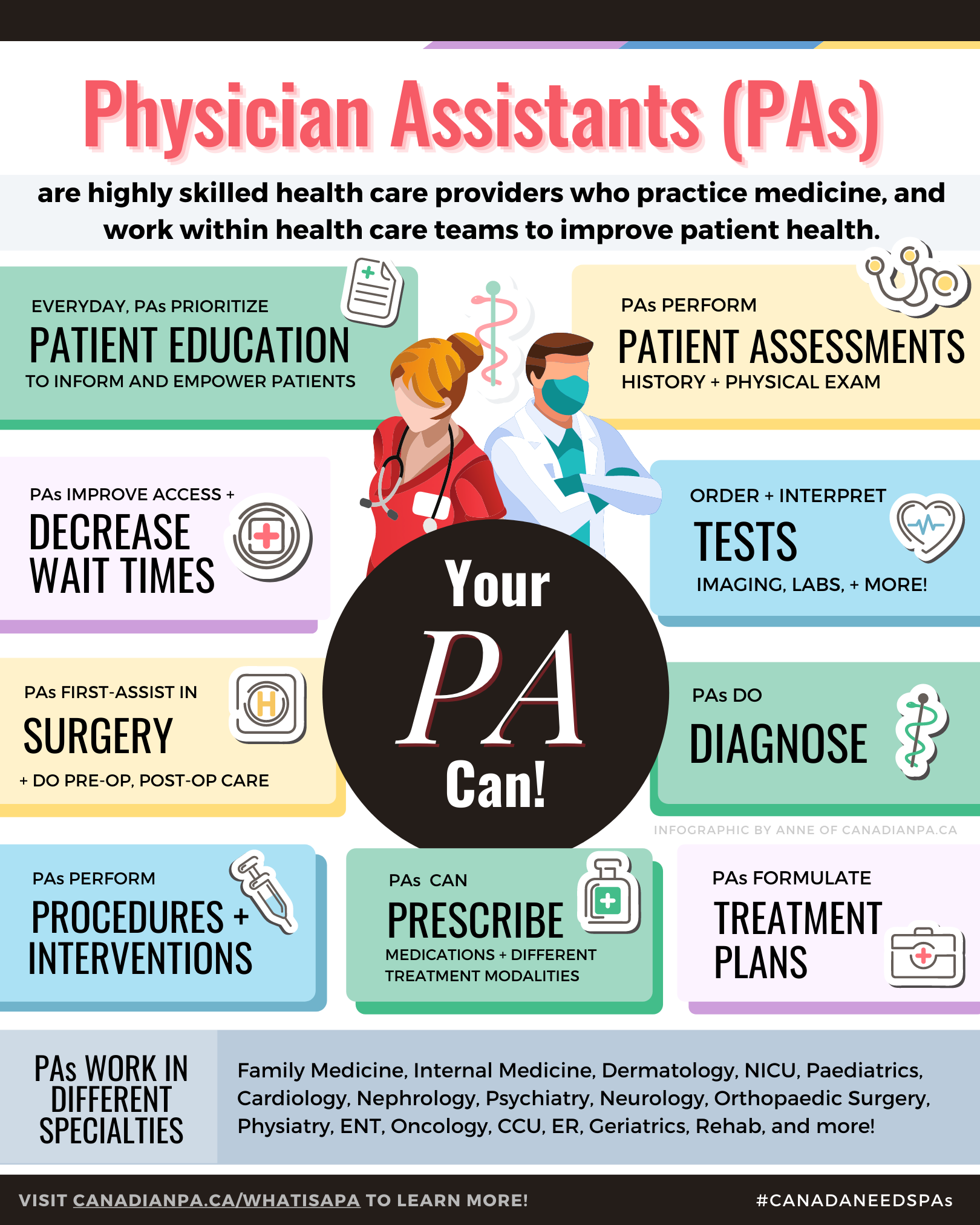
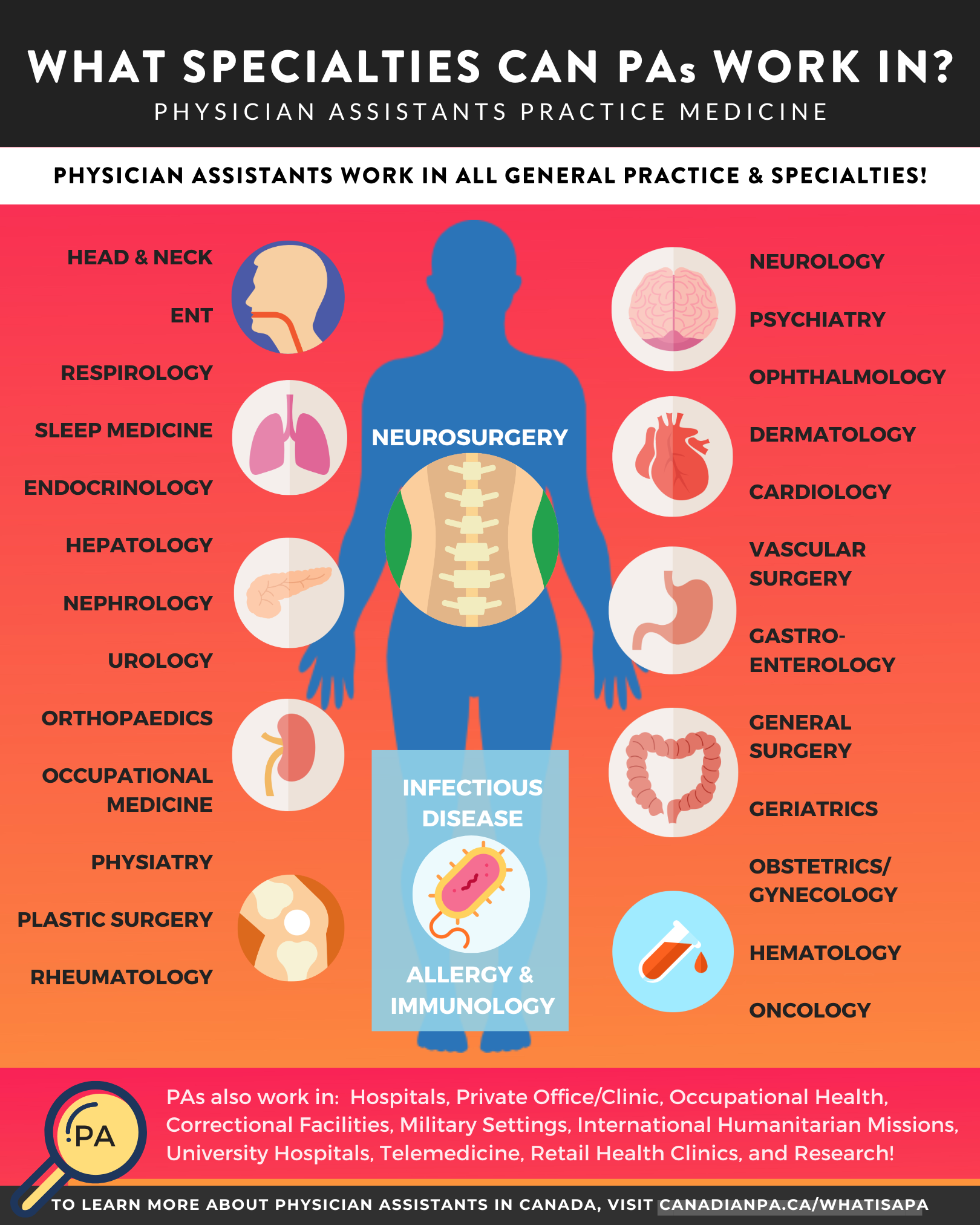
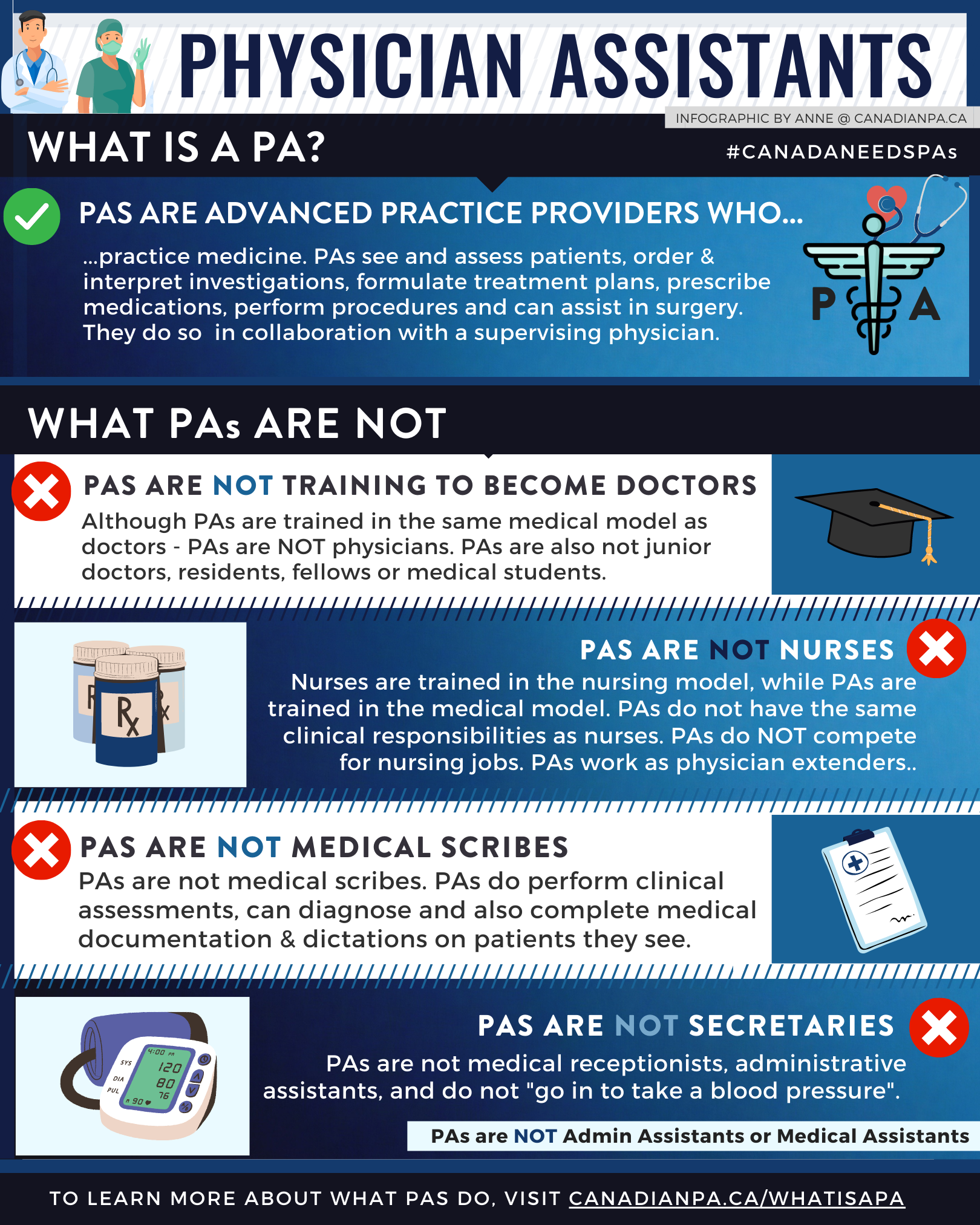
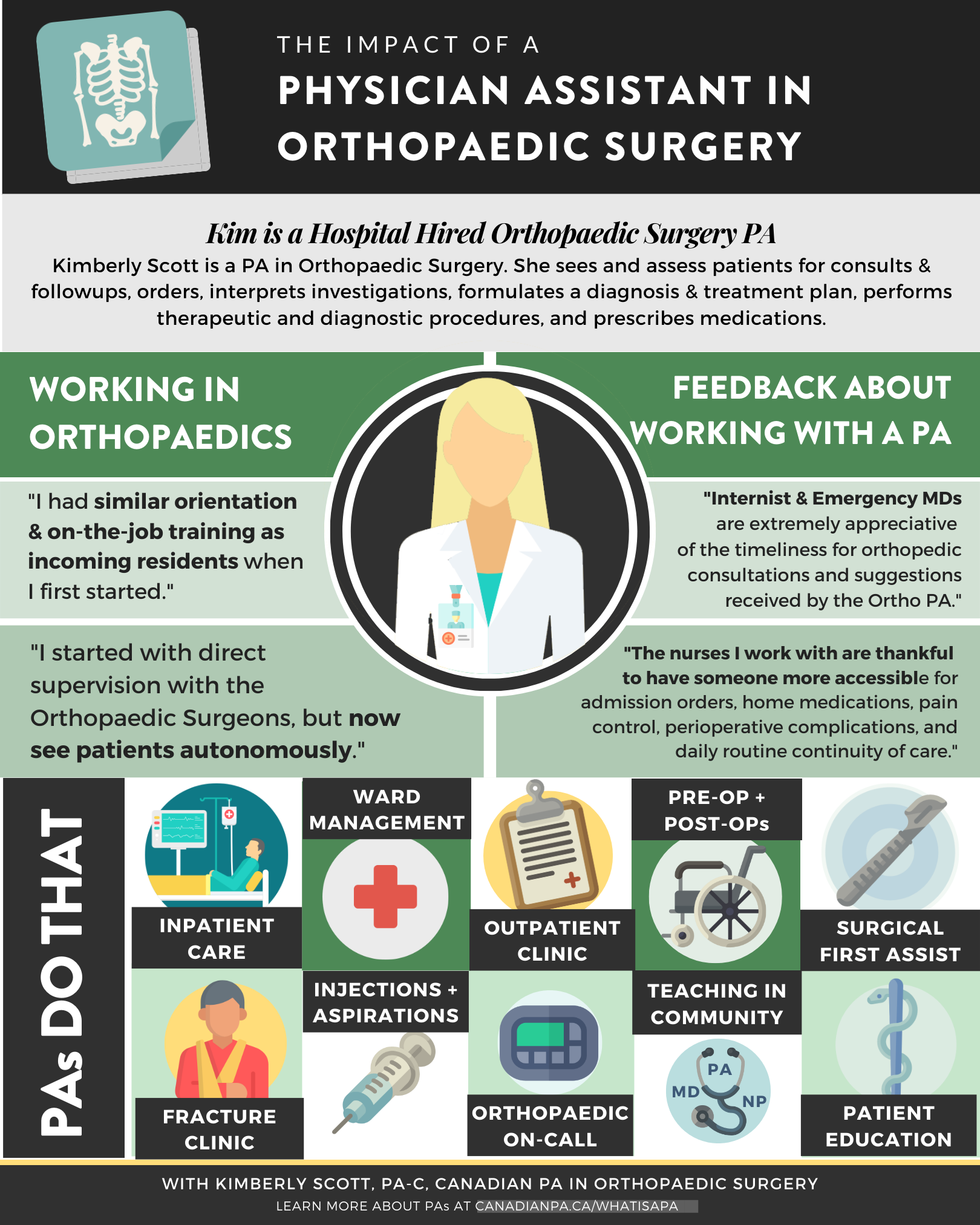
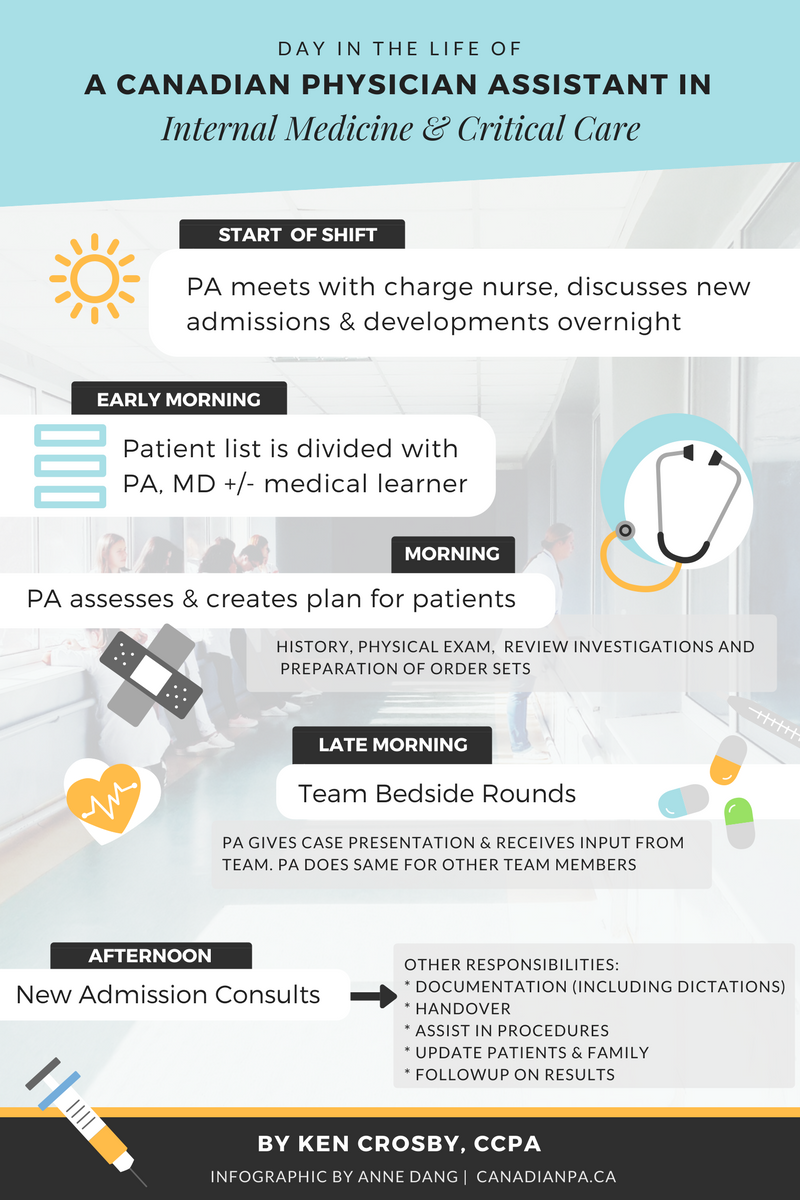
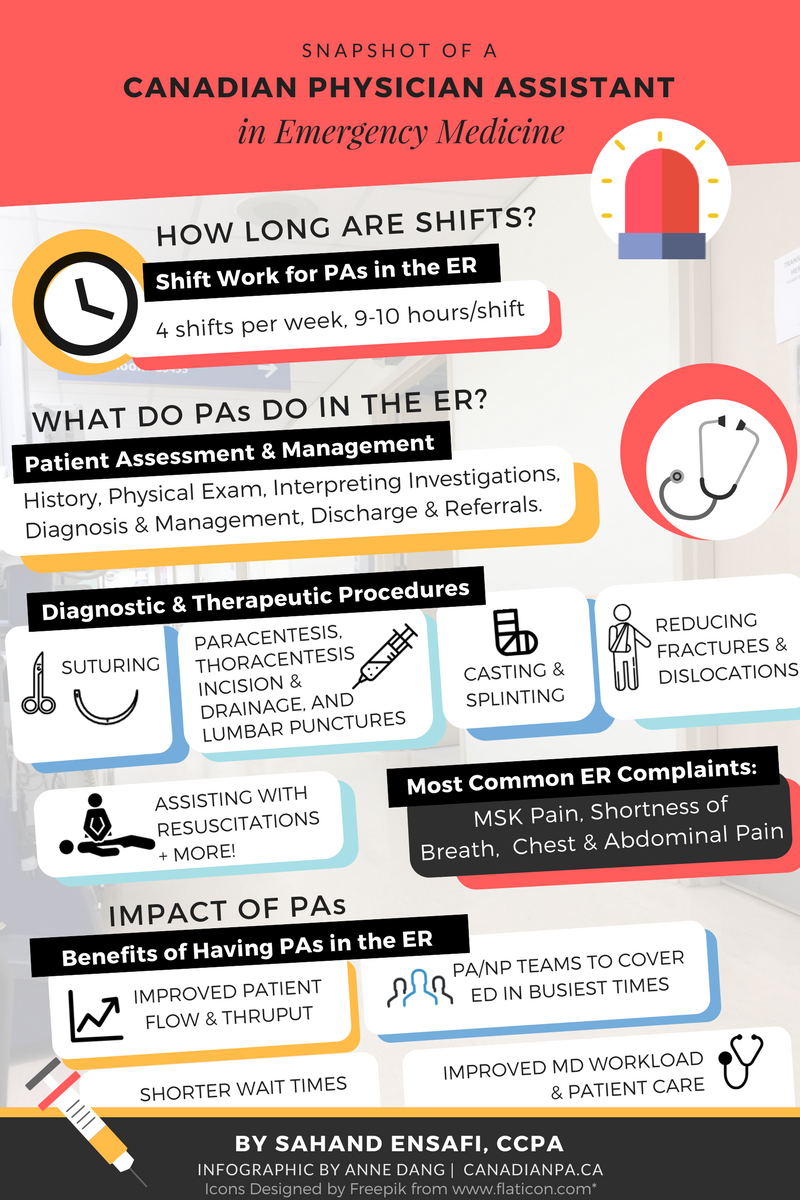
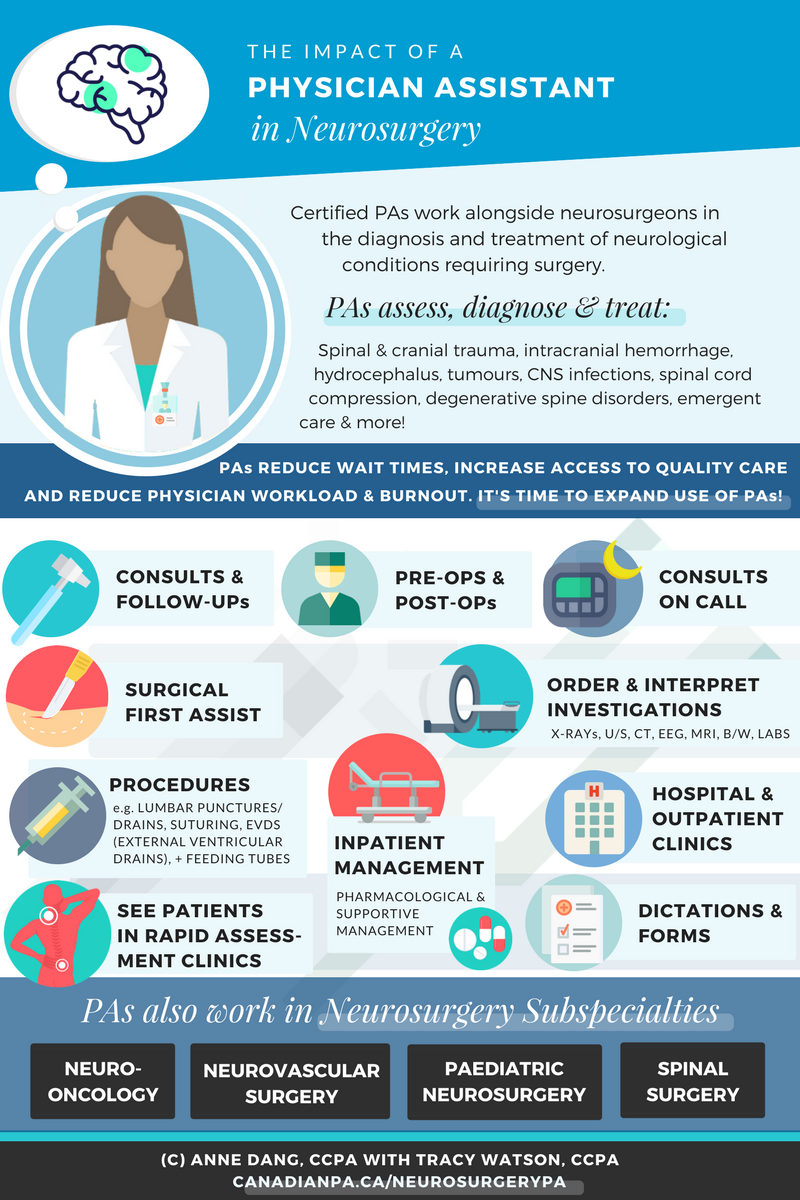
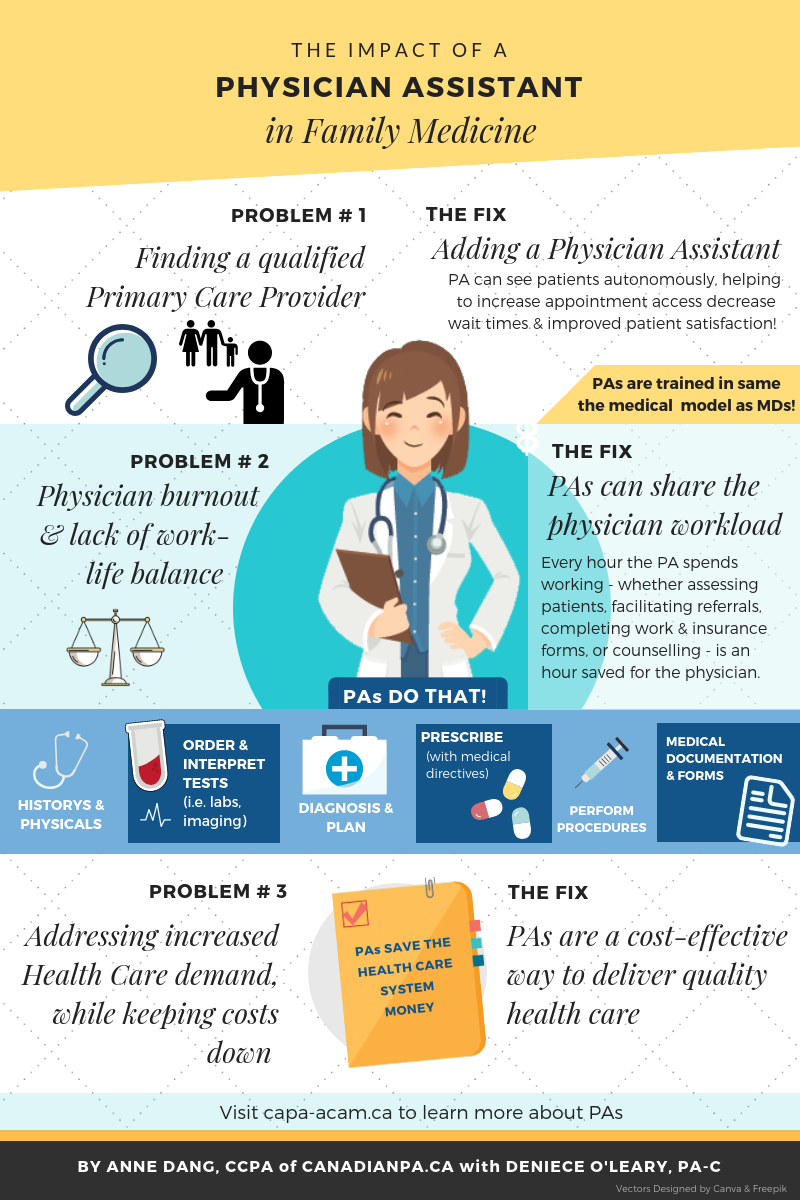
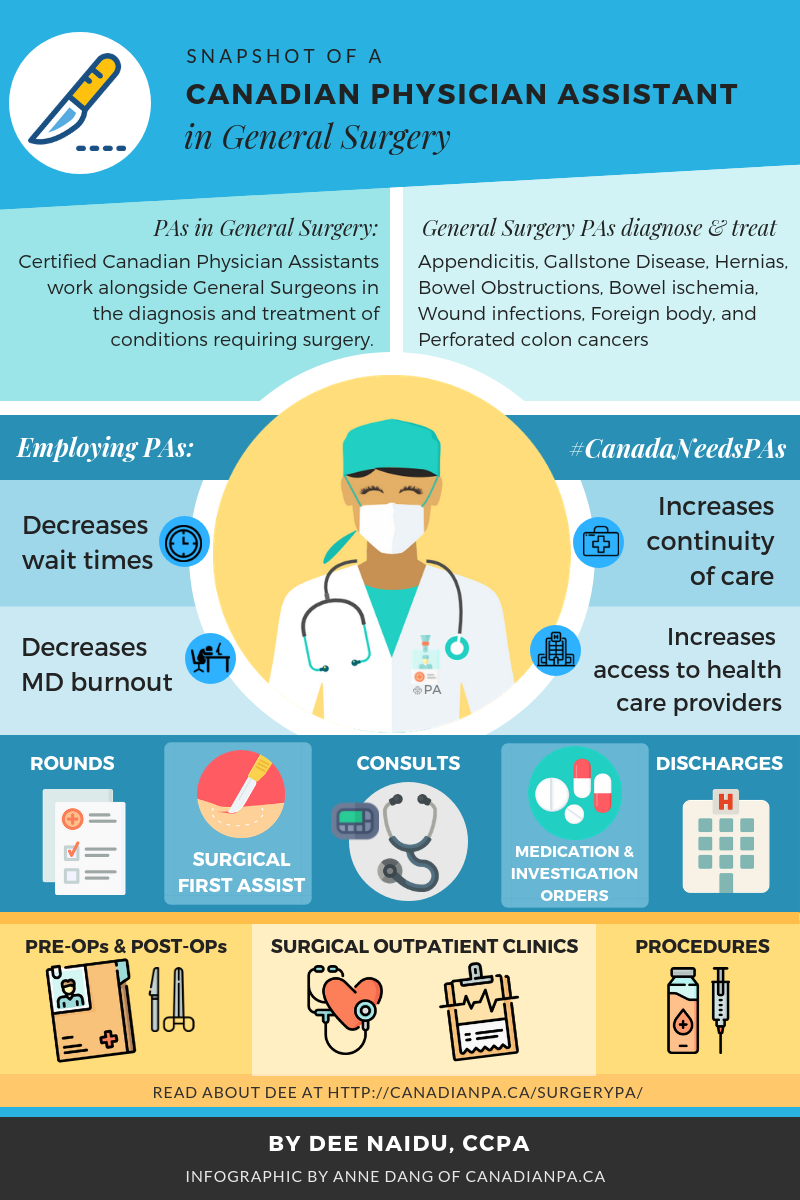
Final notes
Hiring a Physician Assistant (PA) for your practice can bring a multitude of benefits, including workload alleviation, continuity of care, increased access to care, and improved team collaboration.
Understanding the scope of practice and effectively integrating a PA into your practice ensures the optimal utilization of their skills and expertise.
